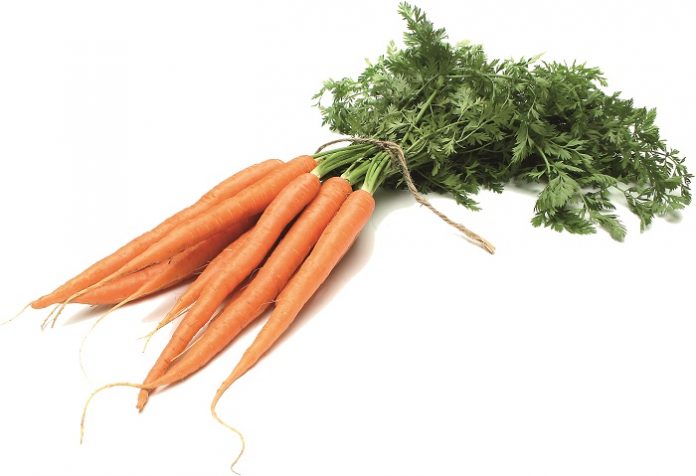Agricultural scientists Norman Borlaug and MS Swaminathan were able to introduce the high yield varieties of rice and wheat to Indian farmers in the 1960s. Sustained effort by scientists, agricultural colleges, farmers, central and state governments during the next decade saw the unfolding of India’s green revolution. Rice yield that was just two tonnes a hectare in the early sixties tripled by the nineties and prices tumbled as shortages eased and India became a surplus state producing more food than its fast growing population could consume. India is the second-largest producer of fruit and vegetables in the world and the largest producer of milk as well. However, food processing and the cold chain infrastructure is minimal at best. Sandip Sen reports.
From shortage to surplus
 By the turn of the century the crisis of shortage became a crisis of surplus. To support tumbling farm prices the government subsidized the farmer with minimum support prices and food subsidies rose along with procurement by the public sector Food Corporation of India (FCI). As subsidized rice and wheat came into the FCI godowns, procurement far exceeded the distribution and consumption of PDS rice and wheat. As the FCI godowns overflowed, storage in open yards accompanied rampant wastage, pilferage and leakages. The food commissioners appointed by the Supreme Court to investigate subsidy leaks estimated after an independent survey in August 2010, that the wastage of grain figures was more than double the government’s own estimates. Terming the wastage as criminal,
By the turn of the century the crisis of shortage became a crisis of surplus. To support tumbling farm prices the government subsidized the farmer with minimum support prices and food subsidies rose along with procurement by the public sector Food Corporation of India (FCI). As subsidized rice and wheat came into the FCI godowns, procurement far exceeded the distribution and consumption of PDS rice and wheat. As the FCI godowns overflowed, storage in open yards accompanied rampant wastage, pilferage and leakages. The food commissioners appointed by the Supreme Court to investigate subsidy leaks estimated after an independent survey in August 2010, that the wastage of grain figures was more than double the government’s own estimates. Terming the wastage as criminal,
the court’s commissioners said negligence by the officials was suicidal, recommending that responsibility and accountability ought to be fixed at the highest level in both central and state governments. However, the wastage continued unchecked as FCI supported by the outdated Essentials Commodity Act and a corrupt administration continued to handle the bulk of grain movement while food subsidies mounted to disproportionate levels.
Rise of processed and packaged food
As food production in India rose, so did the demand for processed and packaged food. Urban double income no kids (DINK) households multiplied in the metros with couples having no surplus time but large disposable incomes. The DINK population grew as fast as India’s IT hubs brought global practices to its doorstep along with the culture of consuming processed and packaged food. Indian taste buds ensured that they became more diverse and varied. There were the powders and pastes of foodgrain, cereals, fruits and vegetables, the ready to cook and the ready-to-eat varieties all packaged in food grade plastics or bottles. There was also processed meat, prawn and fish both for internal consumption as well as for exports. Then there were fruit juices and honey and milk and a variety of milk products which was a industry sustained by powder and packaged milk because fresh supply was both seasonal and regional.
The present government in its budget of last May and in this February’s budget for 2015-16, announced several measures to help the farmer, the consumer as well as the food processing and packaging industries. These include measures both fiscal as well as monetary that will reduce duties and finance the growth of industries in several identified sectors. The bakery, dairy, grain processing, fruit processing, horticulture and poultry industry are to benefit from both infrastructure inputs and duty exemptions in processing, refrigeration and packaging.
Fiscal and monetary measures
 A reduction in customs duty from 10% to 6% for food processing and packaging machinery was announced in the 2014-15 budget last February. According to Harsimrat Kaur Badal, the minister of food processing, “The decision to reduce customs duty on food processing machinery is likely to usher investment in the food processing sector and reduce post harvest losses.” In addition, a special fund of `2,000 crore by the National Bank for Agriculture and Rural Development (NABARD) to provide affordable credit to the agro-processing units was also set up last year.
A reduction in customs duty from 10% to 6% for food processing and packaging machinery was announced in the 2014-15 budget last February. According to Harsimrat Kaur Badal, the minister of food processing, “The decision to reduce customs duty on food processing machinery is likely to usher investment in the food processing sector and reduce post harvest losses.” In addition, a special fund of `2,000 crore by the National Bank for Agriculture and Rural Development (NABARD) to provide affordable credit to the agro-processing units was also set up last year.
National Mission on Food Processing
The government also announced a centrally sponsored scheme under the National Mission on Food Processing (NMFP) that proposes to enhance the 2008-09 scheme to set up 42 mega food parks of which 21 have already got final approval and four are in the stage of implementation along with 20 cold chains across India. A ministry spokesperson confirmed to the business press that 72 proposals of expression of interest have already been received including those from ITC and the Future Group for the remaining 21 mega food parks envisioned in 2008-09.
Each mega food park is to have 30 to 35 food processing centres with a collective investment of around `250 crore (US$ 40 million). In September 2014, the government stated that it expected to approve at least 17 food parks with an investment of `2100 crore in the next several months. A helpline has been set up to assist prospective investors in the food processing sector and the entire scheme will be eMonitored to ensure efficient and timely implementation.











